The Town of Huntington’s Hobart Beach is an important place for migrating shorebirds that need places to rest, feed, nest and raise young. As part of a goal to allow recreational use while protecting some areas for shorebirds, the Town has designated the central and southern portions of Hobart Beach as the Sarah H. Ruppert Water Bird Park Preserve.
Starting in 2020, as more species of birds and piping plovers began laying eggs from the shoreline to the parking lot, the Town began the seasonal closing of the preserve to the public during the shorebird breeding season, April through August.
1. Where Is The Bird Preserve?
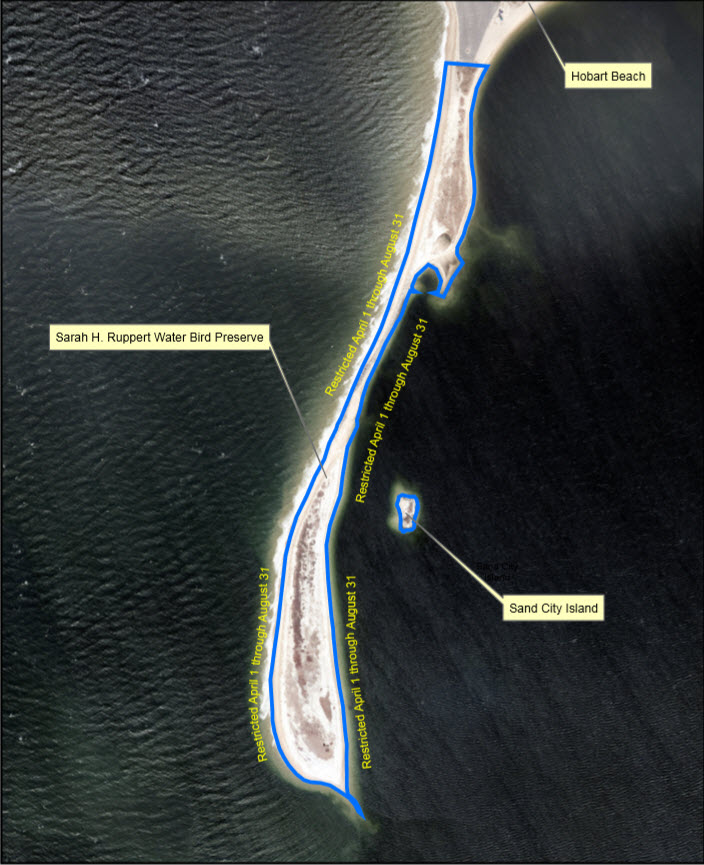 The bird preserve encompasses all land south of the parking lot at Hobart Beach on Eaton’s Neck. The shoreline limits of the preserve end at the high water line.
The bird preserve encompasses all land south of the parking lot at Hobart Beach on Eaton’s Neck. The shoreline limits of the preserve end at the high water line.
2. How Long Has It Been Designated As A Preserve?
The Town of Huntington passed a park-preserve ordinance in 1976. The next year, the Town declared the shorebird colony at Hobart Beach a fragile area (defined in the Town Code as “Areas that provide protection of rare or endangered species or significant archeological site provided such property is not improved by paths, buildings or other man-made structures or uses.”). In October of 2006, the preserve was named by the Town as the Sarah H. Ruppert Water Bird Park Preserve.
3. Why Was The Area Designated As A Bird Preserve?
This area is important to breeding shorebirds that nest on the beach, most of which are either state or federally threatened or endangered. All of these ground-nesting shorebird species are federally protected under the Migratory Bird Treaty Act, while several are also protected under the Endangered Species Act and/or applicable New York State laws. Development and recreation have limited these birds to much smaller areas along the coast.
4. Why Haven’t I Seen A Shorebird Nest?
 Shorebirds’ nests and eggs are well-camouflaged and difficult to see. While this makes it harder for predators to find nests, people may not see them either. If left unprotected, people may accidentally step on eggs or remain too long in the vicinity, keeping incubating adults off their nest.
Shorebirds’ nests and eggs are well-camouflaged and difficult to see. While this makes it harder for predators to find nests, people may not see them either. If left unprotected, people may accidentally step on eggs or remain too long in the vicinity, keeping incubating adults off their nest.
Can you find the piping plover nest in this picture? See FAQ #16 for the answer.
5. When Will The Preserve Be Closed To The Public?

The preserve is closed to the public from early April until all shorebirds are done breeding, usually in early to mid-August.
6. Why Is The Preserve Closed During The Season?
The preserve area is closed to the public during the shorebird breeding season to avoid the harm of these protected species. Research shows that recreational activities, such as beach bathing, walking, jogging, fishing, boat/kayak landing and dog walking can have significant unintentional consequences for the birds. Birds may abandon nests, get separated from their chicks, be more vulnerable to predators or unable to feed. Nests that are not tended to by adults will fail.
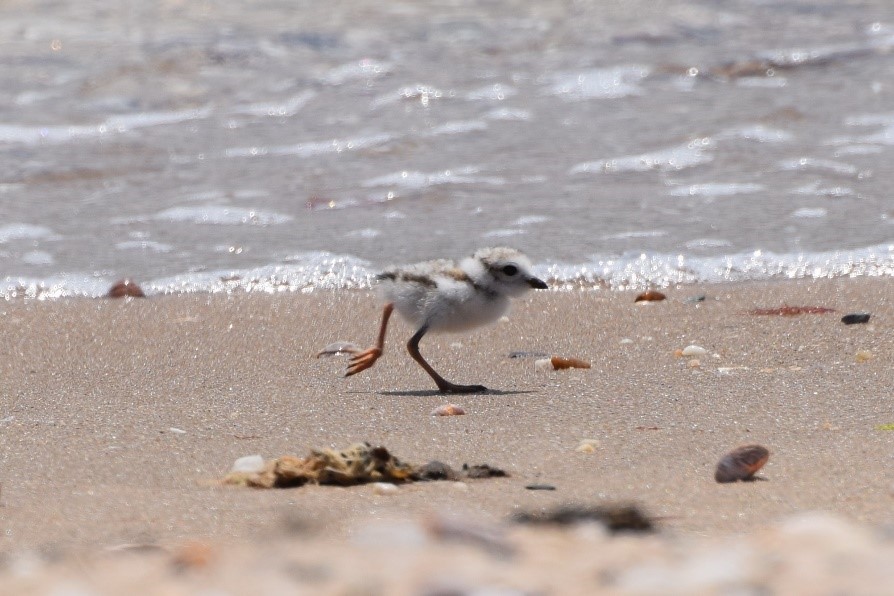 Piping plovers are especially susceptible to these challenges. Piping plover chicks must find food for themselves along the shoreline and must triple their weight during their first two weeks, all while not being able to fly for their first month post-hatching.
Piping plovers are especially susceptible to these challenges. Piping plover chicks must find food for themselves along the shoreline and must triple their weight during their first two weeks, all while not being able to fly for their first month post-hatching.
Even well-behaved dogs frighten plovers and other shorebirds. All dogs are seen as predators, and birds panic when a dog or person approaches their nest or chicks. Every dog is perceived as a threat, no matter its size or age. Plovers are so small and difficult to see on beaches that it is extremely easy to not notice the bird that a dog is chasing. Research shows that shorebirds abandoned their nests after being disturbed by a dog.
Additionally, Town Code prohibits dogs leashed and/or unleashed on all town beaches except for paved areas and boardwalks (per Town Code- Chapter 159 Recreational Activities, Article II USE REGULATIONS AND RESTRICTIONS § 159-20 Behavior and conduct, D (2) [Amended 12-14-2010 by L.L. No. 31-2010; 6-4-2013 by L.L. No. 12-2013; 8-15-2017 by L.L. No. 34-2017]). See below for alternative locations to walk your dog.
7. Why Was I Able To Access The Restricted Area In Previous Years?
For many years, beach patrons were discouraged from the area by other birds – common and least terns – that protect their nests by dive-bombing intruders. These large colonies of terns shrunk over the last 15 years, and patron numbers went up.
The U.S. Fish and Wildlife Service, NYSDEC and volunteers installed stake and string fencing to protect shorebird breeding areas in the interior portions of the preserve. However, an increasing number of patrons and dogs continued to enter these areas.
In 2020, the Town Department of Maritime Services began the annual seasonal process of installing temporary snow fencing with stakes, extending into the low tide water line, to prevent beachgoers from entering the area, as the birds need safe access to the area between the preserve and the water to find food.
8. What If I Stay Out Of The Fencing And Along The Shoreline?
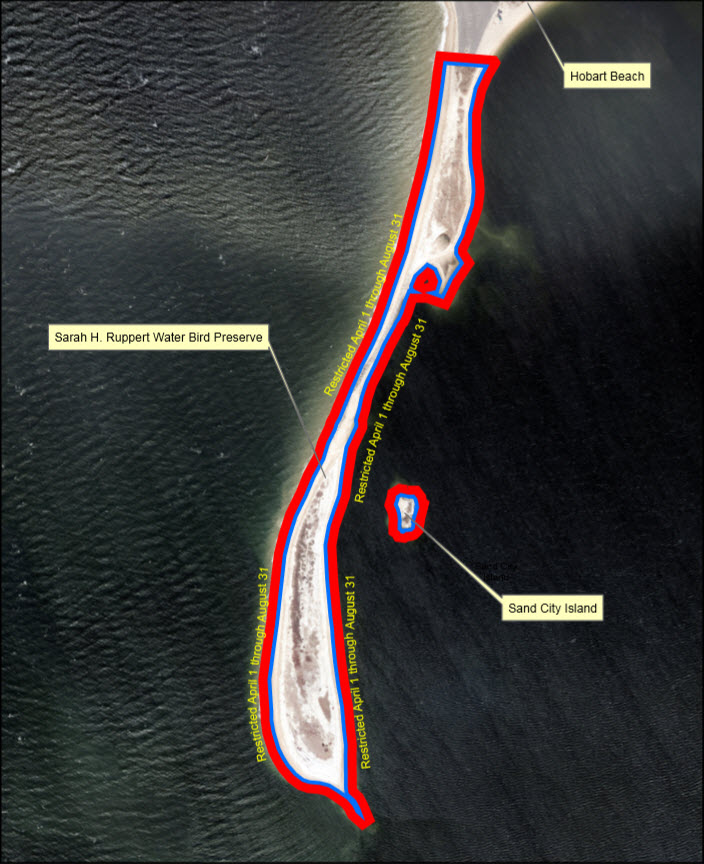 The fencing is specific to nesting areas, but piping plover adults and chicks need to safely access the shoreline and intertidal areas outside of fenced areas to find food for themselves. Please see question number 11 below for more information about piping plovers. The intertidal areas and shoreline are also important resting and staging areas for terns, oystercatchers and other shorebirds.
The fencing is specific to nesting areas, but piping plover adults and chicks need to safely access the shoreline and intertidal areas outside of fenced areas to find food for themselves. Please see question number 11 below for more information about piping plovers. The intertidal areas and shoreline are also important resting and staging areas for terns, oystercatchers and other shorebirds.
Additionally, monitoring has shown that many patrons ignore the fencing or leave behind garbage or food waste that attracts predators.
9. Where Else Can I Recreate Within The Town Of Huntington?
Dogs are allowed on-leash in most Town parks and trails. Refer to https://www.huntingtonny.gov/dogs for alternative locations to walk your dog and areas off-limits to dogs. Dog walking will still be allowed at the Hobart Beach parking lot year-round as well.
Refer to https://www.huntingtonny.gov/beaches for a list of Town of Huntington beaches.
10. What Can I Do To Help These Shorebirds?
- Respect all areas fenced or posted for protection of wildlife.
- Watch these entertaining birds from a distance to avoid disturbing them.
- Keep your pets leashed and within the areas designated for pet access (paved areas or boardwalks).
- Don’t leave or bury trash or food scraps on beaches. Garbage attracts predators that prey upon shorebird eggs and chicks.
- Do not land boats or kayaks within the bird preserve.
11. Is There More Information About Each Of These Species?
Piping Plover – Federally threatened, New York State endangered

Piping plovers are solitary nesters and will defend their chicks and nests by using distractive behaviors (feigning a broken wing, calling, running, squatting) to draw predators or people away from their breeding areas. Plover chicks are mobile while still under the care of their parents and start foraging for themselves on marine worms, beetles, crustaceans and other insects from the intertidal areas of the beach within a few hours of hatching.
Refer to: https://www.fws.gov/northeast/pipingplover/index.html for more information about the piping plover.
Common Tern – New York State threatened
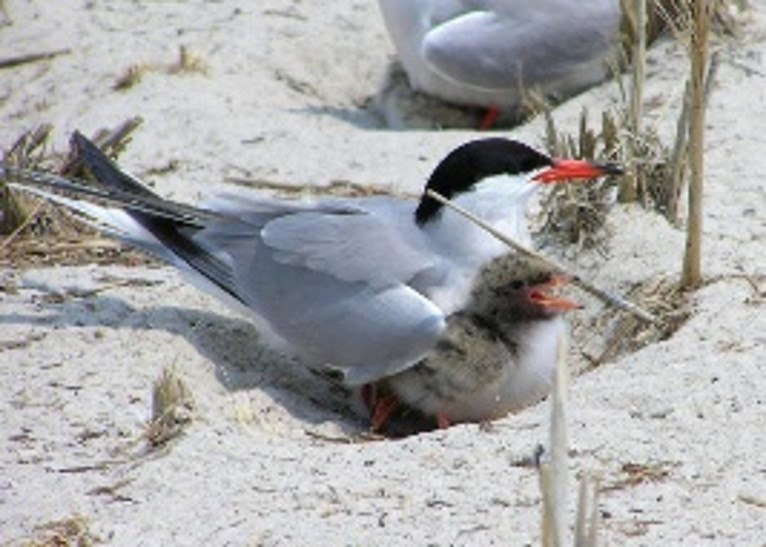
Common tern adults bring small fish back to the chicks at the nest until they can fly. Chicks are vulnerable until they too learn to fly and fish. Common terns nest in colonies and will defend their chicks and nests by dive-bombing predators (fox, gulls, crows, etc.) or people who are close to their breeding areas.
Refer to: https://www.dec.ny.gov/animals/7100.html for more information about the common tern.
Least Tern – New York State threatened
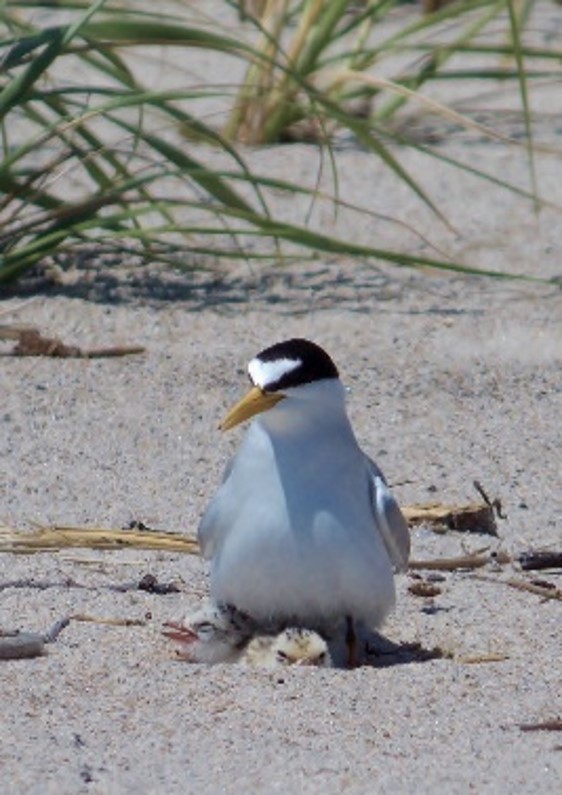
Least tern adults bring small fish back to the chicks at the nest until they can fly. Chicks are vulnerable until they too learn to fly and fish. Least terns also nest in colonies and will defend their chicks and nests by dive-bombing predators (fox, gulls, crows, etc.) or people who are close to their breeding areas.
Refer to: https://www.dec.ny.gov/animals/7094.html for more information about the least tern.
American Oystercatcher
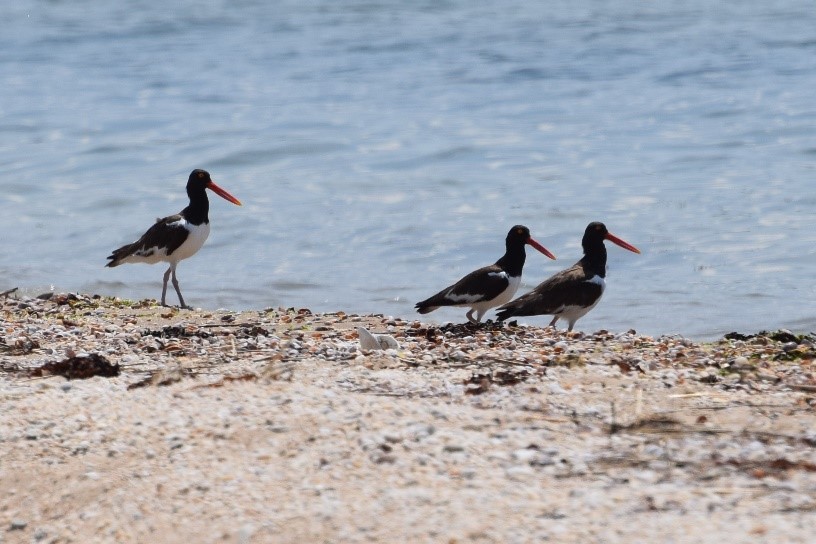
American oystercatchers are solitary nesters and will defend their chicks and nests by using distractive behaviors (calling, running, squatting) to draw predators or people away from their breeding areas. American oystercatcher chicks are mobile but still rely on adults to bring them clams, oysters and other mollusks.
Refer to: https://www.audubon.org/field-guide/bird/american-oystercatcher for more information about the American oystercatcher.
12. Where Do These Shorebirds Nest?
Each of these shorebirds nest on the ground in shallow depressions in the sand/shells/pebbles and their eggs are well-camouflaged and difficult to see. It takes approximately one month for these shorebird chicks to fly well enough to avoid predators and other threats.
13. Why Do These Shorebirds Need Protection?
Many of the shorebird species that breed in the coastal habitats at Hobart Beach and other areas on Long Island are either federally or state-listed due to a decline in their populations. This decline is due to a number of factors, including loss of habitat from shoreline development, disturbances from recreational activities, and high rates of predation by predators whose populations have significantly increased due to human development in coastal areas (gulls, cats, crows, fox, etc.). The protection of these shorebird breeding areas is beneficial to many kinds of plants and wildlife, not just one species.
14. Are There Legal Consequences For Not Protecting The Birds?
Failure to protect these shorebirds at Hobart Beach could result in violations of the Endangered Species Act, Migratory Bird Treaty Act as well as applicable New York State laws. See the U.S. Fish and Wildlife Service’s guidelines for managing recreational activities in piping plover breeding habitat at https://www.fws.gov/northeast/pipingplover/recguide.html.
15. Who Can I Contact For More Information?
For questions regarding the closure and/or management of the Hobart Beach Bird Preserve, contact the Town of Huntington Maritime Services @ (631) 351-3255.
For questions regarding the biology of these shorebirds or the Endangered Species Act, contact the U.S. Fish and Wildlife Service Long Island Field Office Ecological Services @ (631) 286-0485.
For questions regarding the biology of these shorebirds or applicable New York State laws, contact the New York State Department of Environmental Conservation, Wildlife Division @: (631) 444-0310.
16. Plover Nest Location In Photograph